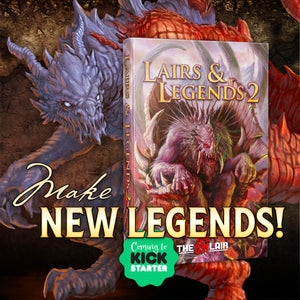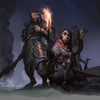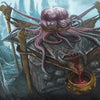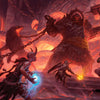Avoid These Critical Role Mistakes in Your D&D Game
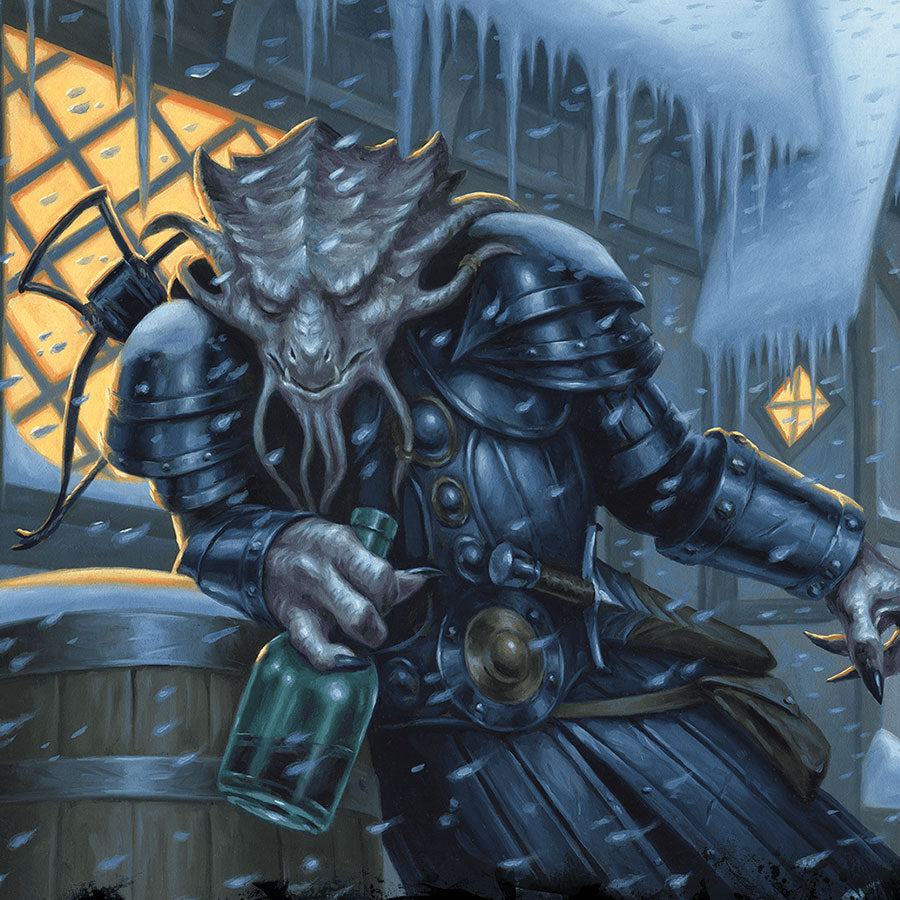
By Luke Hart
Let’s open with a disclaimer. I don’t watch Critical Role. However, I was hearing a lot of chatter about how campaign 3 seemed to be missing the mark for some fans. So, I asked my friend Ed who not only helps research my video topics but also watches CR if he could help me put together a video on some of the things that went wrong in campaign 3.
As I was reading his notes, I was rather shocked at some of their missteps. However, I want to make something very clear: no one becomes as successful as they are without doing A LOT of things VERY WELL. So, although we’re going to be talking about five big problems Critical Role campaign three suffered from, this isn’t a hit piece. This is a CRITIQUE whose ultimate goal is to highlight some valuable lessons that ALL game masters can apply to their own games.
By the way, are you a NEW GAME MASTER feeling a bit overwhelmed by everything involved with running a role-playing game? If so, the Secret Art of Game Mastery can help. Get over 100 years of GM experience distilled into practical, easy-to-read advice.
Watch or listen to this article by clicking the video below.
Problem 1: Pacing
There was no clear direction for far too long. And sure, if a campaign is pitched as a relaxed, sandbox-style game with no overarching plot, that’s totally fine. But that’s not what Critical Role fans have come to expect. Campaign 3 spent dozens of episodes just kind of meandering from event to event, with occasional bursts of forward momentum that never really went anywhere.
Then about a third of the way in, the “big plot” finally kicks off—hard. But instead of tightening the story, it splits the party. And the next stretch of the campaign is focused on side quests to get the characters back together again… except half of the group is now replaced by guest stars.
Oh, and let’s not forget: during the first third of the campaign, the main story gets interrupted entirely for a two-month hiatus. Instead of continuing Campaign 3, they aired a mini-campaign that, at the time, seemed completely unrelated. But surprise—it turned out to be required viewing later on. We’ll get to more on that later.
How to Improve the Pacing
First off, don’t interrupt your campaign to wedge in a whole mini-campaign. And if, for some reason, you absolutely have to—because that “side story” is going to end up mattering to the main narrative—then telegraph that. End the session before the break with an NPC saying, “Let me tell you a story,” or have a character crack open a dusty tome, and then bam—cut to the mini-campaign. At the very least, give the players a heads-up that what’s coming next takes place “five years earlier” and has “major implications” for the story. And if you’re doing this at your home game? That mini-campaign should involve your players. Don’t make them sit on the sidelines unless they’re literally not at the table.
Second, if your campaign has an overarching narrative, then you need to foreshadow it. Early. Have at least a third of your adventures tie into the main plotline—even at the lowest levels. Personally, I like to have at least half of my adventures push the main arc forward, but if that’s too much for you, a third should be your minimum.
And finally, tie the characters’ backstories into the plot. In Campaign 3, one character was tied to the main story right away. A couple others were loosely connected. But that’s not enough. If you’re making character backstories a central part of your campaign—and also running a big story arc—then those two elements need to sync up. Otherwise, it’s just narrative drift.
Problem 2: Character Problems
In Campaign 2, one of the breakout stars was Jester—chaotic, hilarious, and, at first glance, kind of a joke character. But that was the twist: she wasn’t. She was deeply serious, just wrapped in cotton candy and glitter. And it worked.
In Campaign 3, it feels like the lesson some folks took from that was: “People like joke characters! Let’s all do that!” Which led to over half the party playing characters that felt more like Saturday Night Live sketches than actual people in a fantasy world.
And the ones who weren’t trying to be funny? They went the other direction—straight into melodrama. Serious emotional arcs but turned up to eleven. That created a huge tonal clash at the table: goofy hijinks on one side, grim emotional spirals on the other. And nobody seemed willing to meet in the middle.
Add to that a rotating door of guest stars, each one playing a flashy new character that often ended up stealing the spotlight. To be fair, some of these guests were used to great effect—especially the ones hiding a twist or secret agenda. But more often than not, it shifted the focus away from the main cast, making the core party feel like background characters in their own campaign.
Oh, and then we got the returning PCs from Campaigns 1 and 2. Fan favorites, sure—but dropping them into Campaign 3 didn’t always help. Sometimes, it just reminded people of older, better campaigns. And when you’re already on shaky ground, the last thing you want is to make the audience nostalgic for a different show.
How to Improve Character Problems
First things first: set expectations early. When your players are building characters, they need to know what kind of tone the campaign is aiming for. Comedy? Tragedy? Epic heroism? Low-stakes goofiness? Whatever it is, everyone should be on the same page. Ideally, the GM and players decide that tone together, and that shared vision should guide their character creation and backstories.
Second, guest characters can be awesome. Maybe a friend is visiting, or someone wants to jump in for a one-shot arc. Great—give them a cool moment. Maybe even let the spotlight swing their way for an episode or two. But don’t let that guest character overshadow the regulars. Your weekly players are the heart of the story. Keep them at the center.
And finally—yes, bringing in former PCs as NPCs can be a fun callback if everyone’s cool with it. But they should never upstage the current cast. They’re cameos, not co-stars. Let your present-day heroes stay in the spotlight.
Problem 3: Lack of Personal Stakes and Consequences
The central conflict of Campaign 3 was that some wizard wanted to unleash a god-eating entity that would consume the pantheon and then leave. That’s it. Once the gods were gone, the creature wasn’t going to conquer the world, or enslave the population, or even stick around. It would just... leave. And in Matt Mercer’s world, healing magic doesn’t even rely on the gods. Druids are still around, remember? And to make matters worse, there weren’t any clerics or paladins in the party. So, the biggest threat in the campaign didn’t affect the characters personally and barely affected the world. Combine that with a few adventures that painted the gods—or their followers—as antagonists, and you’re left with a group of characters who mostly shrugged and said, “Why should we care?”
And the villain? He didn’t even know who the characters were for the first half of the campaign. When they did finally get on his radar, they were still an afterthought. Why? Because other, more powerful characters—like the stars of previous campaigns—were also involved. So, the villain focused on them, while the current party played second fiddle in their own story.
As for consequences? Forget about it. Every time the party hit a wall, a powerful NPC magically appeared to fix the problem for them. Need a resurrection diamond? Vex’ahlia and Percy show up to hand it over. No big deal. Never mind that Laudna, the dead PC, was literally a warlock of Delilah Briarwood—the same Delilah who massacred Percy’s family, raised them as zombies, and tried to help Vecna become a god. Totally cool now, I guess. Nothing like watching the trauma of Campaign 1 get swept under the rug for the sake of convenience.
Consequences should matter. And this campaign seemed determined to dodge every single one.
How to Fix the Stakes
First off, make the story matter to the characters. Don’t build your entire D&D campaign around a conflict that the party doesn’t care about. Give them personal reasons to get involved. The villain threatens their hometown. Their sibling vanishes. Their patron god is in danger. Whatever the hook is, it needs to matter to them—and not just in a vague, “the world might end someday” way. Make it hit close to home. And once you’ve got that, make the characters central to the solution. Not one group of many. Not spectators to a cosmic boxing match. The heroes. The only ones who can fix this.
Now let’s talk consequences. If something goes wrong—if a character dies, if they make a bad call, if they fail a mission—don’t sweep it under the rug. Don’t have some NPC swoop in with a bag of diamonds and a Deus Ex Revivify. Let the players deal with it. Let them work for it. If a powerful NPC is going to help, make sure it makes sense—and make sure the players still drive the story. This is their campaign, not a cameo reel.
Problem 4: Giving All the Power to the Dice
Look, we all love rolling dice. That clatter-clatter-thunk is half the fun of D&D. But there’s a time and place for it—and in Campaign 3, the dice got a little too powerful. Matt called for rolls in moments that didn’t need them, allowed rolls that probably shouldn’t have been allowed, and sometimes let the outcome of a single d20 completely override the logic of the world. That’s a problem.
First, there’s the “too many rolls” issue. If you’re calling for a check but you need the characters to succeed, either don’t roll or you end up in this awkward loop where they fail once, then twice, then someone else tries... and suddenly everyone’s rolling until someone gets a high enough number. Now you’ve just taught the table that the DC doesn’t matter—only how many dice they can throw at it.
At one point in the campaign, a player had to make an agonizing decision: she had one revivify spell slot and two dead allies. One was her closest friend in the party. The other was someone she’d met only days before, with barely any connection. And instead of making the choice her character would logically make—based on relationships, history, anything—she rolled a die. That’s not roleplaying. That’s outsourcing a critical emotional beat to randomness. And ironically, the die landed on her best friend anyway, making the roll completely pointless. I get it—it’s hard to be the one who makes the painful choice. But sometimes, as players, we owe it to the story to lean into that discomfort. “What would your character do?” is more than a prompt—it’s a responsibility.
And then to illustrate a moment that completely broke the logic of the world and its characters: Imogen—Laura Bailey’s character—attempted to persuade the entire pantheon of gods to give up their power and become mortal, in hopes that doing so would stop the god-eater threat. She rolled a natural 20 on her persuasion check. And somehow, that one roll convinced every single god—including the evil, power-hungry betrayer gods—to just give up everything they’d worked toward for millennia. Gods who wanted to rule, destroy, dominate... suddenly fine with becoming powerless mortals. All because of one roll. That’s not dramatic. That’s not earned. That’s just letting the dice bulldoze over worldbuilding and character integrity.
How to Fix the Dice Problem
First, and this is a hill I’ll keep dying on—if you need the characters to succeed, don’t ask for a roll. Just give them the information, or let them succeed. Rolling introduces the chance of failure, and failure can completely derail the scene. If the story hinges on the party finding the hidden door, don’t make them roll for it—just let them find the door.
Second, when a player doesn’t want to make a hard decision—like choosing which of two characters to resurrect—the GM can step in and ask the most important question at the table: “What would your character do?” Help the player focus on roleplaying the moment, not escaping it. The player might still want to roll, and sure, that’s their call. But a little encouragement goes a long way.
And lastly: a natural 20 doesn’t mean “you win.” It’s not a golden ticket. Some things—like convincing a pantheon of gods to give up their immortality—should never hinge on a single roll.
Problem 5: Too Much Homework
Campaign 3 wasn’t just a story—it was an assignment.
If you didn’t watch Exandria Unlimited, EXU: Calamity, EXU: Downfall, and know the plotlines of Campaigns 1 and 2, well... good luck keeping up. Characters, plot threads, and emotional beats were pulled from across all those series without any warning. You might’ve tuned in thinking this was a fresh start—only to find out halfway through that half the cast had secret backstories from other campaigns that suddenly mattered a lot.
The worst part? None of this was signposted. The show didn’t say, “Hey, you should probably watch these other things first.” It just expected viewers to know. So, if you were watching Campaign 3 as your first dive into Critical Role, you probably felt lost. And if you did try to catch up, you were looking at hundreds of hours of content.
The lore should enhance the story, not bury it. If your campaign hinges on knowing obscure details from three spin-offs and a one-shot from two years ago, that’s not depth—that’s confusion. It’s the same mistake the Marvel Cinematic Universe made when you suddenly needed to watch six Disney+ shows to understand a two-hour movie. And just like in the MCU, your players will start checking out if they feel like they’ve been left behind.
Solving the Homework Problem
First things first: the focus of your campaign should always be the campaign you're actually playing. Period. Not the prequel. Not the side story. Not the deep lore from five years ago. The one on the table right now.
If you do want to pull in events from older campaigns or bits of ancient history, great—just make sure you introduce that information within the current story. Don’t force your players (or your viewers) to go digging through past campaigns, old notes, or a YouTube archive just to figure out what’s going on.
And remember: not everyone at the table is a lore goblin. Some folks are here to swing swords and flirt with NPCs. So, keep the worldbuilding relevant. If the lore doesn’t serve the current campaign, cut it—or rework it until it does. Let the game be accessible, even to the person who missed session zero and still calls the Big Bad “that one wizard guy.”
100 Years of GM Experience at Your Fingertips!
Are you a NEW GAME MASTER feeling a bit overwhelmed by everything involved with running a role-playing game? Are you a VETERAN GAME MASTER looking for new tips and tricks to take your games to the next level? Look no further than the Secret Art of Game Mastery.
We at the DM Lair have distilled our CENTURY of accumulated GM experience into an easy-to-read guide of practical advice that you can immediately apply to your games! We've even included our own templates–the things that we use to prepare our ACTUAL games.
Get all three books to master your game:
- The Secret Art of Game Mastery. Contains over 100 years of GM advice distilled into an easy-to-read format. It introduces and explains the tools of the trade, scheduling, playstyle, post-game notes, getting player feedback, and more.
- The Secret Art of Preparation. Brings to your fingertips the actual templates and guides that the DM Lair team uses to prepare games, Lair Magazine, and more. Designed as a three-ring binder, it's intended for you to write directly into for your entire campaign!
- The Secret Art of Notetaking. Gives you the keys to tracking your campaign from session to session just like the DM Lair team. Designed as a three-ring binder, it's intended for you to write in and keep track of your whole campaign!
With so much knowledge and experience on its pages, The Secret Art of Game Mastery is guaranteed to become an indispensable tool for all game masters, new and veteran alike. And if that isn’t enough, the information applies to all game systems and all genres!
-
Posted in
Game Master How-To Articles



